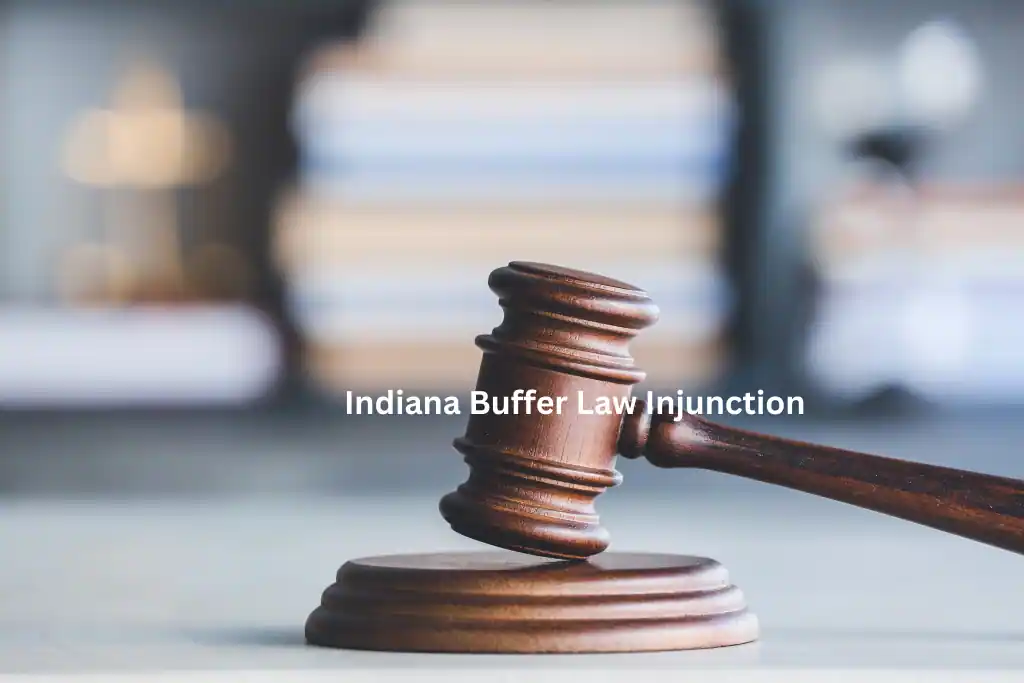
Introduction to the Indiana Buffer Law Injunction
The Indiana Buffer Law has stirred up quite a bit of controversy, and now an injunction is shaking things up even further. Farmers, environmentalists, and lawmakers are all weighing in on the implications of this legal action. With tensions rising, it’s vital to unpack what the Indiana Buffer Law injunction means for our land and waterways. This complex issue not only affects agriculture but also raises questions about environmental protection efforts in the state. Join us as we delve into the details surrounding this significant legal battle and explore its potential consequences for everyone involved.
Explanation of the Injunction
The Indiana Buffer Law Injunction is a legal order that temporarily halts the enforcement of specific provisions within the buffer law. This law mandates vegetative buffers along waterways to protect water quality and habitats.
In essence, the injunction pauses any action taken against farmers or landowners who may not comply with these buffer requirements. It provides them a reprieve while legal challenges unfold in court.
This measure addresses concerns raised by various stakeholders about potential overreach and its effects on agricultural practices. Many view it as necessary for balancing environmental goals with farming interests.
As litigation progresses, this injunction will shape discussions around land use policies in Indiana. The implications for both sides are significant, sparking debate regarding environmental protection versus agricultural freedom.
Background and History of the Buffer Law
The Indiana Buffer Law was introduced to protect water quality across the state. It aims to establish vegetative buffers along waterways, creating a natural filtration system for pollutants.
Initially, the law stemmed from growing concerns about agricultural runoff adversely affecting local ecosystems. The push for such regulations began in response to various environmental studies highlighting the need for stronger protections.
Since its inception, farmers have debated its implications. While many support sustainable practices, others feel constrained by mandated buffer zones that limit land use.
Over time, advocacy groups and policymakers realized that collaboration was essential. This led to discussions on balancing agricultural productivity with environmental stewardship. The evolving narrative around this law reflects broader national conversations regarding land management and conservation efforts in agriculture today.
Arguments for and Against the Injunction
Supporters of the Indiana Buffer Law argue that it plays a crucial role in protecting waterways. They believe maintaining vegetative buffers can reduce nutrient runoff, improve water quality, and enhance habitats for wildlife.
On the other hand, opponents assert that the law imposes unnecessary restrictions on agricultural practices. They claim these regulations could lead to decreased farmland productivity and increased costs for farmers struggling with compliance.
Farmers express concerns about losing valuable land to buffer zones. This perspective highlights a potential threat to their livelihoods while stressing the need for flexibility in implementing environmental measures.
Environmentalists counter this viewpoint by emphasizing long-term ecological benefits. They argue that safeguarding natural resources is essential not only for today but also for future generations who rely on healthy ecosystems.
Impact on Farmers and Environmentalists
The Indiana Buffer Law Injunction carries significant implications for both farmers and environmentalists. Farmers often express concern over the restrictions imposed on their land use. They argue that these regulations could limit agricultural productivity and increase operational costs. For many, maintaining profit margins is a constant struggle.
On the other hand, environmentalists view the injunction as a setback in conservation efforts. Riparian buffers play a crucial role in protecting waterways from runoff and erosion. Without them, water quality may decline, adversely affecting local ecosystems.
Tensions grow as each group advocates for its priorities. Farmers seek autonomy to manage their lands effectively, while environmentalists push for sustainable practices that protect natural resources. This conflict highlights the need for dialogue between both parties to find common ground amid differing interests.
Potential Solutions or Compromises
Finding common ground is essential in addressing the Indiana Buffer Law injunction. One potential solution could involve a tiered approach to buffer zones, allowing flexibility based on specific farm characteristics and environmental needs.
Another avenue might be enhanced collaboration between farmers and environmental agencies. Workshops or forums can help both sides share their perspectives and concerns. This dialogue fosters understanding while exploring practical solutions that satisfy agricultural practices without compromising ecological integrity.
Additionally, implementing technology such as precision agriculture tools can optimize land use within buffer areas. These innovations may reduce water runoff while maintaining crop yields.
Incentive programs for farmers who adopt sustainable practices could also bridge the gap. Financial support for creating effective buffer strips would encourage compliance while easing economic burdens on producers.
Conclusion: Future of the Indiana Buffer Law Injunction
The future of the Indiana Buffer Law injunction remains uncertain. As debates continue, both sides are passionate about their viewpoints. Farmers express concerns over additional regulations while environmentalists emphasize the importance of protecting waterways.
Finding a middle ground could be crucial. Possible compromises may include tailored buffer zones or financial assistance for farmers adapting to new guidelines. Collaboration between agricultural groups and environmental organizations might pave the way for effective solutions that consider both economic viability and ecological health.
As discussions evolve, stakeholders will need to remain engaged. The outcome will likely influence farming practices and environmental conservation efforts across Indiana in the coming years. Balancing these interests is essential for sustainable growth in agriculture and preservation of natural resources alike.





